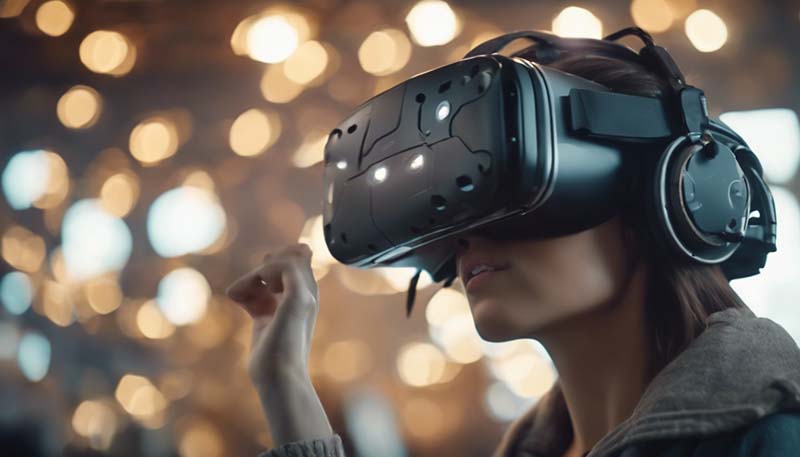The Future of Virtual Reality in Accessibility
Virtual reality (VR) has the potential to revolutionize the way we interact with technology and the world around us. One of the most exciting and promising applications of VR is in the field of accessibility, where it can help to improve the lives of people with disabilities and create a more inclusive society.
Introduction
Accessibility refers to the design of products, devices, services, and environments to be usable by as many people as possible, including those with disabilities. While significant progress has been made in recent years to improve accessibility, there is still much work to be done.
VR has the potential to play a key role in advancing accessibility by providing new and innovative solutions for people with disabilities. In this article, we will explore the current state of VR in accessibility, as well as the future possibilities and challenges that lie ahead.
Current Applications of VR in Accessibility
There are already several VR applications that are making a difference in the lives of people with disabilities today. Some of the most notable examples include:
- Physical Rehabilitation: VR can be used to create immersive and engaging physical therapy programs that help people with mobility impairments to improve their strength, balance, and coordination.
- Pain Management: Virtual reality has been shown to be effective in reducing chronic pain by providing a distraction from the pain and promoting relaxation.
- Autism Therapy: VR can be used to create controlled and safe environments for people with autism to practice social skills and improve their ability to interact with others.
- Visual Impairment: VR can be used to help people with visual impairments navigate their environment more easily by providing audio cues and haptic feedback.
Future Possibilities
While there are already several VR applications that are making a difference in the lives of people with disabilities, the future holds even more exciting possibilities. Some of the potential future developments in VR accessibility include:
- Brain-Computer Interfaces (BCIs): BCIs have the potential to revolutionize the way people with severe mobility impairments interact with technology. In the future, VR could be used in conjunction with BCIs to enable people to control virtual environments with their thoughts.
- Haptic Feedback: Haptic feedback technology is improving rapidly, and in the future, it could be used to create more immersive and realistic VR experiences for people with visual impairments.
- Social VR: As VR becomes more widespread, there will be more opportunities for people with disabilities to connect with others and participate in social activities in virtual environments.
- Education and Training: VR has the potential to revolutionize education and training by providing immersive and interactive learning experiences. In the future, VR could be used to provide customized and accessible learning experiences for people with disabilities.
Challenges and Considerations
While there is enormous potential for VR to improve accessibility, there are also several challenges and considerations that must be addressed in order for it to reach its full potential:

- Cost: VR technology can be expensive, and not everyone can afford it. It will be important to find ways to make VR more affordable and accessible to people with disabilities.
- Comfort and Usability: Not everyone can tolerate wearing a VR headset for extended periods of time. It will be important to develop more comfortable and user-friendly VR interfaces that can be used by people with a wide range of abilities.
- Privacy and Security: As with any technology, there are concerns about privacy and security when it comes to VR. It will be important to ensure that VR systems are designed with privacy and security in mind, and that users are educated about the potential risks and how to protect themselves.
- Content Creation: In order for VR to have a meaningful impact on accessibility, there needs to be more high-quality and accessible VR content created specifically for people with disabilities. This will require collaboration between developers, designers, and people with disabilities themselves to ensure that the content meets their needs and expectations.
Conclusion
Virtual reality has the potential to be a game-changer for accessibility, providing new and innovative solutions for people with disabilities. While there are still challenges to overcome, the future holds exciting possibilities for VR in accessibility, and it will be interesting to see how this technology continues to evolve and improve the lives of people with disabilities.
Comment